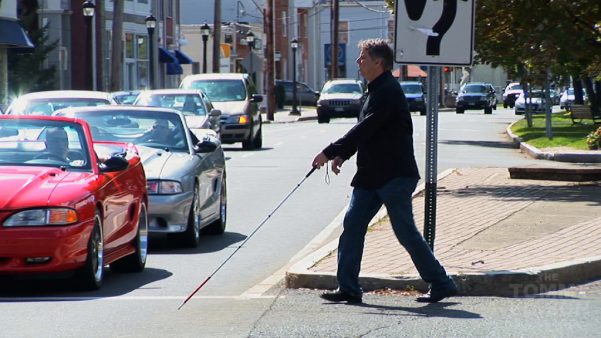
In the United States, people with disabilities represent about 20% of the population. In Canada, our rate is slightly lower coming in around 14%. When it comes to technology, people with disabilities are often overlooked or not even considered. As able-bodied people, we take for granted the ability to pick up our phone and quickly use an app. Or find a way to get around a city. But Google is changing all of that through the Google Impact Challenge: Disabilities. The aim of the program is to fund solutions that would increase access and opportunity for people with disabilities. This amazing initiative kicked off by asking the question “what if”? Asking participants to pose questions around ways to improve technology for people with disabilities.

One participant asked the question, “what if blind people could read movies using Braille?”. Another asked “what if captioning was the norm and not an after thought in higher education?”. And “what if mobile phones could read and translate sign language?” Asking these questions help developers understand what challenges people with disabilities face. As able-bodied people we take these types of activities for granted. We don’t need assistance watching TV, or going to see a movie. We don’t need a translation service to be able to talk to friends and family. That’s why Google’s initiative is so important. It helps to level the playing field. Giving people with disabilities equal opportunity to be able to enjoy their daily lives.
One particular grant caught my eye. The Perkins School for the Blind has developed an app that helps people who are blind or with low vision be able to navigate the “last 30 feet”. GPS technology can get you so far, but often not directly to your destination. With the BlindWays app, people who are blind or with low vision can accurately get to their destination. It uses crowd-sourced data to help people get to bus stops. The down side to this app is that it is only available in the Greater Boston area. But hey – its still good news! This app opens the door for cities all across North America to start using this type of technology.
I can only imagine how frustrating it would be to arrive at what you think is a bus stop, only to hear the bus you need drive right past you. People with disabilities want to be independent and mobile, so why aren’t there more cities using this type of technology? Often times, cities rely on the individual to come up with solutions that work best for them. However, this type of attitude creates barriers rather than removing them. Cities need to put in the time and effort to build the infrastructure and then allow developers to come up with solutions to bridge the gap.
 There are many public services that would be better off if there was “an app for that”. But cities think that people aren’t going to use them. My city uses a calendar type app to tell me when its my garbage day. The alternative is a paper calendar. Imagine for a moment that you are blind or have low vision and in order to access information you need an alternate version. Braille is still an option for people who can read it. Large print is an option for people who have enough vision to be able to read the print. But why not an app? Most people have some kind of device, whether that’s a phone or a tablet and apps can and should be created to help out the public. But make sure that you consider the needs of people with disabilities. Even though BlindWays isn’t available in my community, I think its an amazing initiative that is going to allow people with disabilities to be more independent and make the community more inclusive. I think these types of developments are extremely important and I commend Google for their efforts to build a more inclusive society.
There are many public services that would be better off if there was “an app for that”. But cities think that people aren’t going to use them. My city uses a calendar type app to tell me when its my garbage day. The alternative is a paper calendar. Imagine for a moment that you are blind or have low vision and in order to access information you need an alternate version. Braille is still an option for people who can read it. Large print is an option for people who have enough vision to be able to read the print. But why not an app? Most people have some kind of device, whether that’s a phone or a tablet and apps can and should be created to help out the public. But make sure that you consider the needs of people with disabilities. Even though BlindWays isn’t available in my community, I think its an amazing initiative that is going to allow people with disabilities to be more independent and make the community more inclusive. I think these types of developments are extremely important and I commend Google for their efforts to build a more inclusive society.
